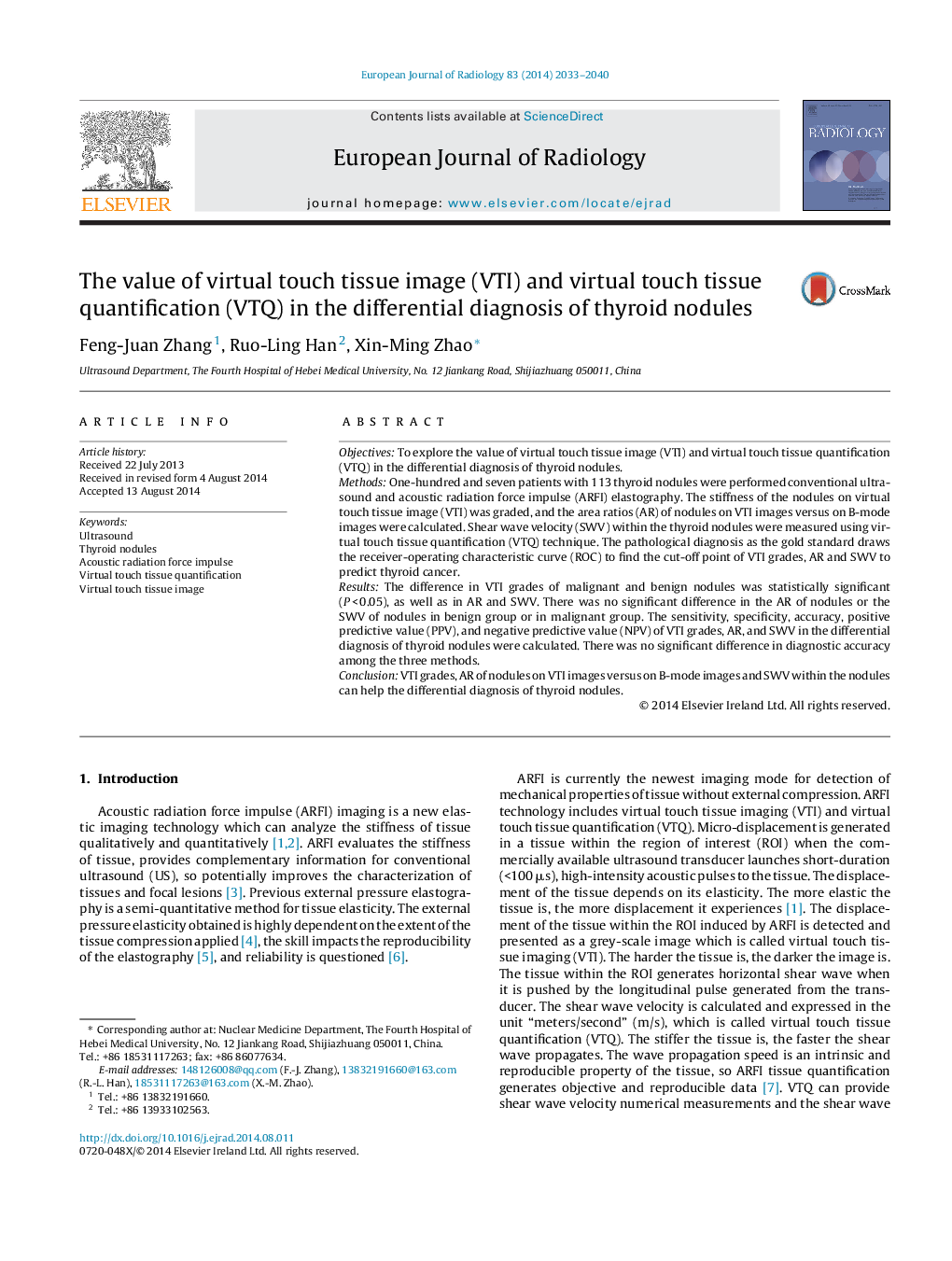| Article ID | Journal | Published Year | Pages | File Type |
|---|---|---|---|---|
| 4225516 | European Journal of Radiology | 2014 | 8 Pages |
•All nodules in the research were confirmed by histopathology.•The classification method of VTI was easy to learn.•VTQ could provide quantitative elasticity measurements for thyroid nodules.•VTI classification could provide semi-quantitative elasticity analysis.•The area ratio could show invasive extent of malignant tumor.
ObjectivesTo explore the value of virtual touch tissue image (VTI) and virtual touch tissue quantification (VTQ) in the differential diagnosis of thyroid nodules.MethodsOne-hundred and seven patients with 113 thyroid nodules were performed conventional ultrasound and acoustic radiation force impulse (ARFI) elastography. The stiffness of the nodules on virtual touch tissue image (VTI) was graded, and the area ratios (AR) of nodules on VTI images versus on B-mode images were calculated. Shear wave velocity (SWV) within the thyroid nodules were measured using virtual touch tissue quantification (VTQ) technique. The pathological diagnosis as the gold standard draws the receiver-operating characteristic curve (ROC) to find the cut-off point of VTI grades, AR and SWV to predict thyroid cancer.ResultsThe difference in VTI grades of malignant and benign nodules was statistically significant (P < 0.05), as well as in AR and SWV. There was no significant difference in the AR of nodules or the SWV of nodules in benign group or in malignant group. The sensitivity, specificity, accuracy, positive predictive value (PPV), and negative predictive value (NPV) of VTI grades, AR, and SWV in the differential diagnosis of thyroid nodules were calculated. There was no significant difference in diagnostic accuracy among the three methods.ConclusionVTI grades, AR of nodules on VTI images versus on B-mode images and SWV within the nodules can help the differential diagnosis of thyroid nodules.
